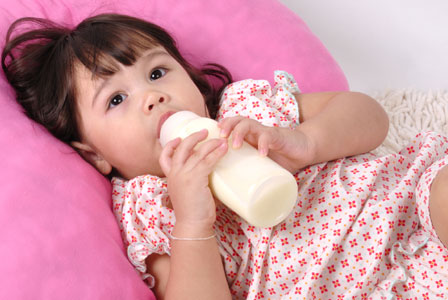If you’re a working parent or a stay-at-home parent who has a child with special needs, you experience untold challenges in balancing responsibilities. But are our lives really much different from any mom trying to have it all?
![]()
When I learned my unborn son, Charlie, had Down syndrome, I was working full time doing PR for a Fortune 50 company and just days from marrying my soulmate. I huddled alone in an empty office, listening to our genetic counselor share the news.
In those first few moments, I felt blindsided. A friend at work hugged me while I cried and whispered my overwhelming fear: “But I have no patience. How can I do this?”
Two years later, I realize I should have been praying for organization skills instead of patience.
Constant chaos, constant guilt
Things are much easier now, but the first year of Charlie’s life was constant chaos. I was a first-time mom who returned from maternity leave to dive into brand-new responsibilities.
The resulting zip-line through each work week was exhausting.
Three days a week, I had Charlie’s therapy scheduled first thing in the morning, so I could participate and then dash into the office. I was determined not to be one of those parents who shoves a child into the hands of a therapist and takes an hour off from parenting.
We had play therapy, occupational therapy, physical therapy and speech therapy. My child may have Down syndrome, I thought, but by God he is also going to have every helping hand along the way!
Five days a week, I made deals with whatever devil was causing 5 p.m. requests from colleagues and 6 p.m. traffic — both keeping me from getting home by 5:30 so our nanny could have dinner with her family.
Most nights, I logged onto my laptop and tried to stay ahead of a growing to-do list. Some nights, I actually made progress.
I was a mess. I knew it, and everyone around me saw it but pretended it would get better. They wanted me to succeed and I wanted so badly to be able to do it all. To have it all.
Cheating my children
Then I learned I was expecting my daughter. As gestational diabetes kicked in and my legs and ankles swelled to beach ball proportions, I recognized I had chosen my priorities poorly. I had been cheating Charlie, my unborn daughter and my career by trying to juggle each equally.
Today, thanks to company leadership that is willing to think outside the standard-issue 9-to-5 career model, I have regained confidence in both my mommy skills and my work skills. A part-time job share allows me to dedicate a full weekday to Charlie’s therapies, keep up with laundry and actually put dinner on the table without using a takeout menu.
I spend half my week in yoga pants and a pony tail, and the other half in business casual that, by comparison, feels like prom wear. It is the perfect balance — for me.
Every woman in America has heard the rally cry to “have it all,” but what’s life like for those women who have a child with special needs? Is it harder to have it all? Or just different?
Next: Another mom's decision
{pageBreak}
Passion for career and family
Corey Coggins has three children under age 6, and her oldest has Down syndrome. Corey works full time because for her, being successful shows her parents that all the hard work they poured into giving her a debt-free college education was worth it. “They gave me more than they had at my age,” she says. ”A gift I want to pass on to my children. So I work.”
But balancing passion for a full-time career as compliance director at an investment bank and passion for her three beautiful children takes organization — across time zones, sometimes.
"I work extra hard out of fear that without being a top performer my flexibility will be the first to be removed."
“From the beginning, I managed my daughter’s therapy, feeding schedule and nurse visits like a business. Scheduled, created spreadsheets for feedings prior to heart surgery, kept notes on her many visits and looked for the improvements we needed.”
Corey concedes she’s not just a type-A personality, “I'm the ‘A+’ personality. Those crazy driven people who like to have control, who need to be uber organized, who can drive themselves crazy trying to get more done in less hours, who create endless lists, who strive to ‘have it all.’”
“I love my job,” Corey says. “[But] 12-hour time zone differences are a constant issue. Throw a child with special needs in this mix and presto the A+ type kicks it into A++ gear.“
A supportive job is everything
Every day brings an unexpected challenge. Right now, Corey has a to-do list for her daughter’s new kindergarten teacher, who has little experience teaching children with Down syndrome.
“That means this working mom has to pull together educational materials for the teacher, websites she can reference and learn how to teach my daughter how to read. All after the markets are closed, conversations with the other side of the world are complete, and my kids have had my undivided attention for the early evening.”
Corey credits a flexible work environment that supports sometimes unpredictable scheduling dilemmas, from weekly therapies to out-of-town specialists and an emergency hospital stay when her daughter developed pneumonia last year.
“’Mom guilt is alive and well,” she says. “I work extra hard out of fear that without being a top performer my flexibility will be the first to be removed. Working isn't for everyone. Working moms of a child with special needs have a difficult juggling act.”
Next: Staying home
{pageBreak}
Trading career for motherhood
Joanna von Staden has a son with Down syndrome. She has worked full time in the past, and today she stays home with her two children.
"When family and friends don’t understand the scheduling demands that come with parenting a child with special needs, frustration levels can rise."
“Both [arrangements] are equally draining,” she says. “At times I do miss the adult conversations and lunch hour with co-workers. [My son] has many medical issues, one including a [feeding tube], and we have been denied multiple times for any assistance. So until some of his medical issues get better with time, I count my blessings every day that I'm the one who is able to take care of him and my daughter.”
For parents who stay at home full time, it can be difficult not to resent the parent who heads to the office each day.
Jenn Scott had a full-time career she traded for full-time motherhood. She also has a son with Down syndrome.
“I tell [my husband] all the time that his job is just as hard, but his day is broken up,” Jenn says. “He sees different people. [He] has alone time. [He] is guaranteed a shower every day. He has an hour of alone time for the commute and then gets to eat at least one meal — lunch — alone and while it's hot.”
Joanna adds, “Sometimes [my husband] complains about his commute from work and there are days I would welcome an hour of alone time even if it was stuck in traffic!”
Finding part-time balance
For parents who continue to crave the fast pace of a career but also want time with their children, part-time work can be the solution.
“I have worked part-time since having kids,” says Ashley Walling, a nurse whose son has Down syndrome. “I took a leave of absence for nine months after I had Connor, and then gradually returned back to part-time.” She credits “an amazing neurosurgery group that has been so flexible and wonderful with me since having kids” for helping her “feel like I have the best of both worlds.”
When family and friends don’t understand the scheduling demands that come with parenting a child with special needs, frustration levels can rise.
Special needs schedules
Many points raised by these moms of children with special needs likely resonate with many stay-at-home moms of children with no disability. So, what’s different about having a child with special needs?
“Adding special needs to the mix adds a level of frustration I never thought I'd ever have to deal with,” Jenn says.
“The biggest misconception is that my day revolves around this sickly kid who has the awful disease and his therapies. I explain it to everyone like this, ‘You take your kids to sports and activities. So do I. I just have extra visitors and extra activities.’“
“I just think others have no clue what is involved in caring for a child with special needs, whether you work or stay at home,” Ashley says. “Most do not realize all the therapy that is involved daily/weekly, the meetings, evaluations, doctors’ appointments, juggling work/school schedules, dealing with your other children and their schedules, your husband’s schedule, finding support and trying to still function in society as you did before, but truly will never be the same again!“
“I have learned situations I can and cannot function in, and have started being more honest about things I can and cannot do without the guilt or perfection I use to try to carry. Unfortunately this may include losing or gaining a few people in your life.”
Stay-at-home parents of children with special needs have quite a bit in common with stay-at-home parents of typical children. As Jenn points out, “My life also doesn't revolve [around my son] and his specialness. It revolves around trying to find balance between being a mom, wife and woman.”
All these demands come with great rewards and tradeoffs for the working spouse. “[My husband] doesn't get to see the daily triumphs that either kid makes,” Jenn says. “Like at gymnastics or at physical therapy. He's not as involved as I am with the daily decisions regarding our lives.”
As for me, I’m thankful my husband supports this new work/family arrangement. It may not be the ideal situation in 10 years, but for now, everyone is happy, healthy and as stress-free as any family can be.
And that feels pretty special.
Read more about special needs
Best apps for kids with special needs
10 Things you should know about autism
Having a sibling with Down syndrome

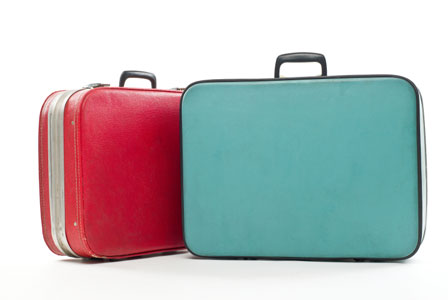








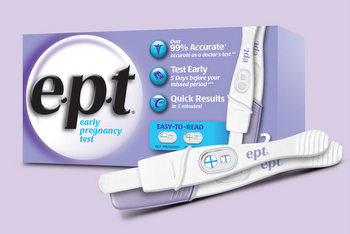

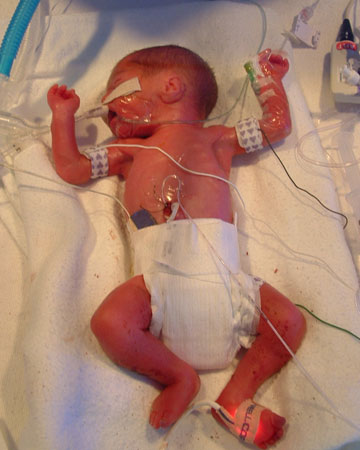

 Miranda Lambert and Blake Shelton
Miranda Lambert and Blake Shelton Kourtney Kardashian
Kourtney Kardashian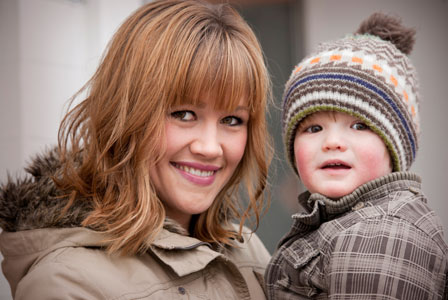





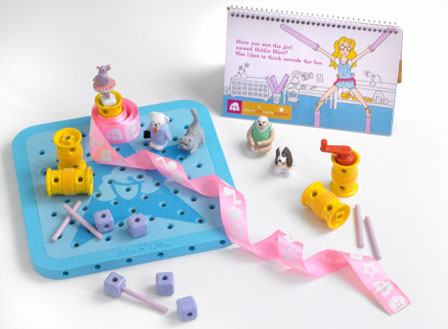

 The Taylor Swift influence
The Taylor Swift influence Hey, Justin Bieber isn’t so bad!
Hey, Justin Bieber isn’t so bad!



